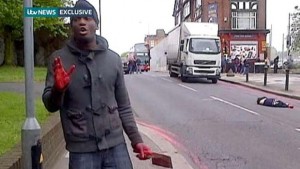For the third time in a year and a half, France has suffered a major terrorist attack. On July 14, Mohamed Bouhlel, a 31-year-old Tunisian-born Frenchmen unknown to intelligence officials, drove a large delivery truck into a crowd of thousands who had gathered to watch fireworks celebrating Bastille Day, France’s national holiday. When his attack had concluded, 84 people had been killed and more than 100 injured along a path of carnage stretching close to two kilometres.
While new information continues to emerge, this attack has all the hallmarks of an Islamic State-inspired homegrown terrorist assault. The latest incident demonstrates what has become the modus operandi of IS. The selection of a “soft target” or public event where thousands gather in celebration coupled with the use of an everyday or readily accessible weapon to conduct the attack.
In an exercise that has unfortunately become too commonplace, we continue to try and understand how each specific attack fits into the broader context of this phenomenon. The Nice incident potentially presents a new twist on a tried-and-true attack strategy and sets a dangerous precedent moving forward.
In order to understand this point, we need to identify the two different types of threats we currently face from Islamist terrorists. The first is the threat posed by the terrorist groups themselves who may train, organize and deploy individuals to conduct attacks. This was what occurred in Paris on November 13, 2015. This is different from the threat posed by what is known as Islamist-inspired homegrown terrorism where individuals are inspired by a group (or their Islamist ideology as a whole) but lack any direct links or support from the group or its agents. At this point, this appears to describe the Nice attack.
This distinction is important because of our assumptions about these different types of threats. Each one manifests differently and presents authorities with distinct challenges. Those directed by groups traditionally represent a greater threat casualty-wise because they are often more co-ordinated and sophisticated. These characteristics, however, make them increasingly vulnerable to detection, identification and disruption because they involve extensive planning and often have multiple moving parts. In comparison, we recognize that it is infinitely more difficult to identify and disrupt the lone actor because of their autonomy but, until recently, this was also felt to limit their ability to mount large mass-casualty attacks. This most recent attack clearly shatters that assumption.
This suggests we are witnessing an evolution in how lone actor or inspired attacks might proceed moving forward. We have previously seen other individuals use vehicles in the commission of attacks. Canadians will remember Martin Couture-Rouleau employed this tactic when he killed Warrant Officer Patrice Vincent in Saint-Jean-sur-Richelieu in October of 2014. The attack in Nice, however, is on an entirely different level and, in a manner that will be surprising to most, represents thought and learning.
The thought process: If a small vehicle can kill a certain number of people, which earlier attacks show many individuals had previously calculated, a larger vehicle can kill many, many more people and is much more difficult for police to stop as the attack is unfolding. This is a troubling development because it represents a logical evolution of previous attacks. Whether Mr. Bouhlel consciously deduced this simple fact is inconsequential, the reality is that others who might be inspired to act will connect these dots and look to duplicate or exceed the carnage created by this recent attack.
We know that terrorists learn, adapt and evolve their tactics. Sometimes, this process can occur quite quickly, from one attack to the next. We also know that success breeds imitation. This most recent incident reveals a very simple but dangerous revelation: Attacks involving larger vehicles can exponentially increase the number of deaths and police face greater challenges in stopping such a vehicle as attacks are taking place. Couple this with the fact that larger vehicles are easily acquired and it represents a very concerning and dangerous evolution, adding yet another wrinkle to the challenges posed by lone-actor attacks. Essentially, the Nice attack paired the lethality of the co-ordinated and sophisticated strike with the disadvantages facing authorities in detecting and preventing them.
theglobeandmail.com



